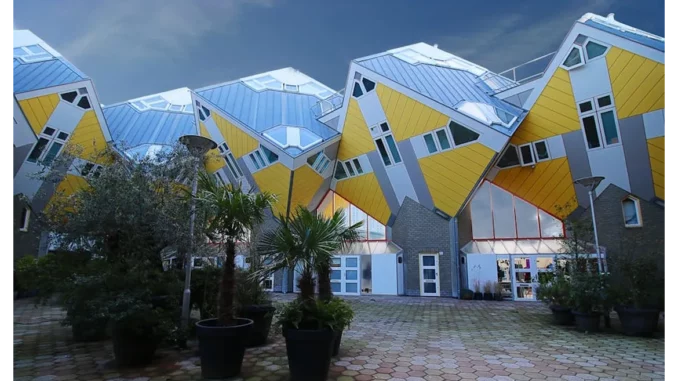
I recently had the privilege of engaging in a comprehensive dialogue with Patricia Collins, a Senior Sustainability Consultant at one of the preeminent real estate firms in the UK. With over a decade of experience at the vanguard of green building certifications, Patricia has witnessed the transformative evolution of sustainability attributes and their profound influence on the real estate market. Our conversation unveiled the dynamic landscape of green building features and their significant impact on rental income and capital values.
Focus360 Energy: property compliance services – pre-planning to post-construction. Learn more.
“The traditional approach of amassing sustainability certifications is no longer sufficient,” Patricia asserted, setting the tone for our discussion. “Today, corporate real estate professionals are increasingly focused on understanding and articulating the tangible benefits of specific sustainability measures.” Patricia elaborated on how conventional certifications, such as LEED and BREEAM, have been pivotal in advancing the industry towards greener practices. However, she pointed out that the current emphasis is shifting towards metrics related to energy efficiency and emissions performance. “Certifications alone do not provide the complete picture anymore,” she remarked. “Tenants and investors are becoming more discerning, looking beyond mere certifications to the actual performance and sustainability outcomes of buildings.”
Corporate occupiers striving to achieve their carbon reduction targets are increasingly prioritising properties that demonstrate verifiable progress in energy efficiency, electrification, and clean energy procurement. Patricia highlighted several key elements now gaining prominence among leading tenants. Energy efficiency, she explained, is no longer about merely installing energy-efficient systems, but about proving that these systems deliver the promised savings and performance. Electrification, the process of replacing on-site fossil fuel systems, is another critical focus. “Electrification is a vital step towards reducing a building’s carbon footprint, especially when combined with clean energy sources,” she elucidated. For new constructions, lowering embodied carbon by selecting materials and construction methods that minimise carbon emissions from the outset is a top priority.
Patricia further discussed the growing importance of tools such as the Carbon Risk Real Estate Monitor (CRREM) and the Science-Based Targets initiative, which provide clear pathways for reducing operational and embodied carbon. “These tools are bringing more transparency to the market,” she noted. “They offer a framework for where buildings need to be in terms of their decarbonisation journey.” She also cited the National Australian Built Environment Rating System (NABERS) as an example. NABERS, which focuses on measuring the ongoing performance of buildings rather than their initial design, is expanding globally, including into the UK, and is making a substantial impact on how building performance is assessed.
With local governments and regulatory bodies increasingly emphasising building performance standards, the real estate market’s perception of value is also evolving. “Historically, calculations for green premiums have been backward-looking, relying on past data,” Patricia explained. “But as more data on building performance becomes available, we anticipate a stronger emphasis on energy and emissions performance.” A recent JLL survey in the UK underscores this shift, revealing a move from traditional certifications towards energy efficiency, emissions reduction, and Net Zero Carbon alignment. Patricia noted that this shift is creating an opportunity for certifications that validate actual energy performance, such as NABERS. “Investors should be proactive and not wait for data or certification frameworks to evolve,” she advised.
The future of green building certifications is rapidly evolving. Patricia shared insights on how existing certification frameworks are adapting to remain relevant. For instance, the International Living Future Institute (ILFI) has developed a new certification programme focused on decarbonising existing buildings without major capital projects. “This initiative extends ILFI’s rigorous Zero Carbon Certification to existing assets,” she explained. “It’s a significant step forward in accelerating credible decarbonisation efforts.” Similarly, the U.S. Green Building Council (USGBC) and the UK’s Building Research Establishment (BRE) are enhancing their offerings to focus more on emissions performance. Patricia pointed out that USGBC’s LEEDv5 for Operations and Maintenance and BRE’s upcoming BREEAM V7 are both positive developments that will help set existing buildings on a path towards decarbonisation.
Patricia concluded by emphasising the importance of collaboration in advancing the next frontier of green building certifications. “Certifications will always have a role, especially in markets lacking transparency,” she said. “However, the future lies in a more integrated approach where sustainability attributes are assessed holistically, considering energy efficiency, emissions reductions, health, equity, biodiversity, and resilience.”
As our conversation came to an end, it was evident that the landscape of green building certifications is not static but dynamic, continually evolving to meet the needs of the industry and the planet. Patricia’s insights provide a compelling view into how the most valued green building features are changing and what this signifies for the future of sustainable real estate.


Be the first to comment